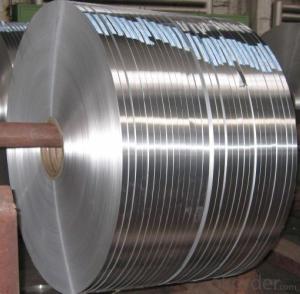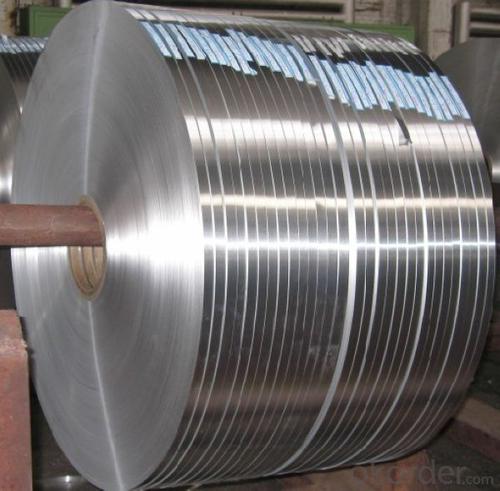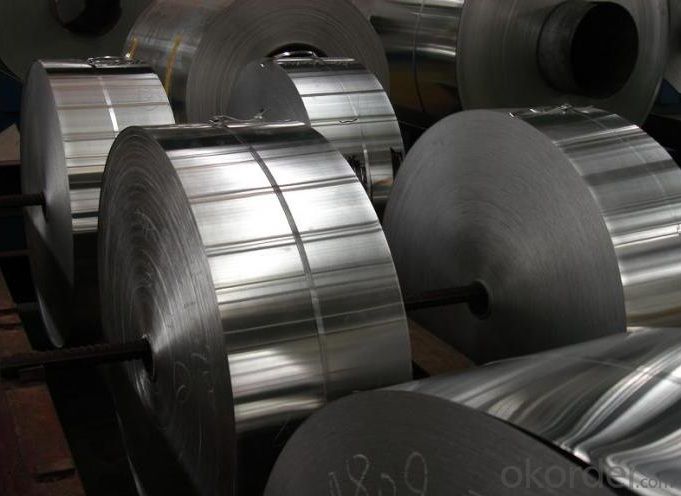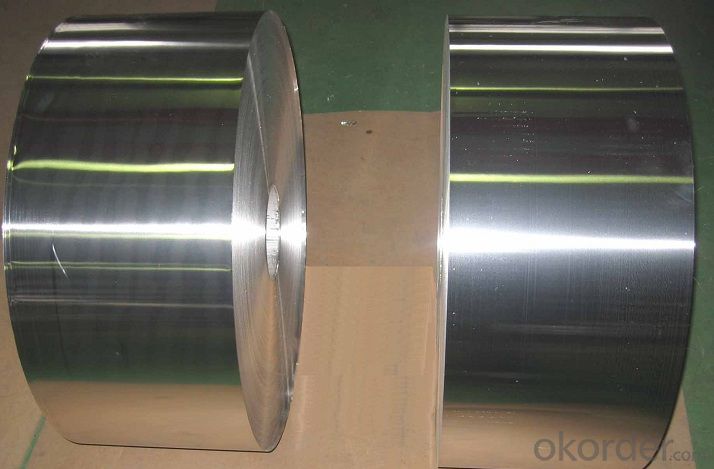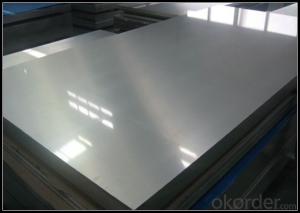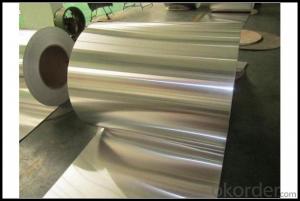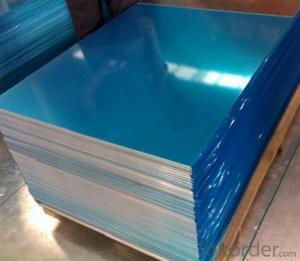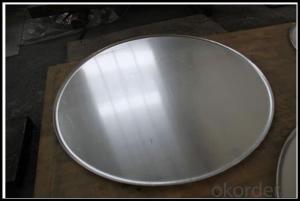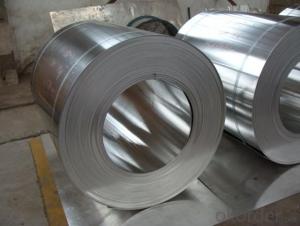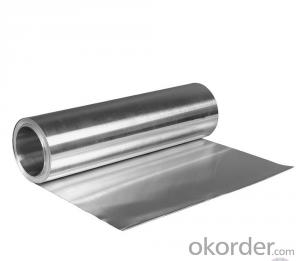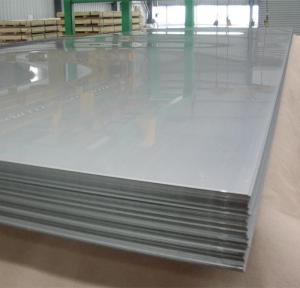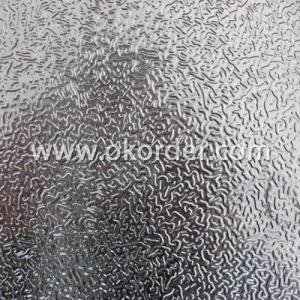Bulk 6061 Aluminum Sheets - Both Sides Clear Lacquer Aluminium Strip for Vial Seal
- Loading Port:
- Shanghai
- Payment Terms:
- TT OR LC
- Min Order Qty:
- 5 m.t.
- Supply Capability:
- 5000 m.t./month
OKorder Service Pledge
OKorder Financial Service
You Might Also Like
l Product Specification
1)Alloy: 8011
2)Temper: H14
3)Thickness: 0.17 to 0.23mm
4)Width: 60 to 900mm
5)Type: In coil
6)ID of the coil: 76mm, 152mm, etc.
7)Tensile strength: 125 to 155Mpa
8)Elongation: 2.0 to 3.0
9)Earring rate: < 2%
10)Coating type:
A. One side color coating and the other side transparent protective lacquer
B. Both sides transparent protective lacquer
Main applications: Aluminum closures, pharmaceutical vial seals, flip off / tear off vial seals
lPackaging & Delivery
Packaging detail: wooden cases that are suitable for long distance exporting
Delivery detail: 25-30 days after receiving L/C or payment in advance
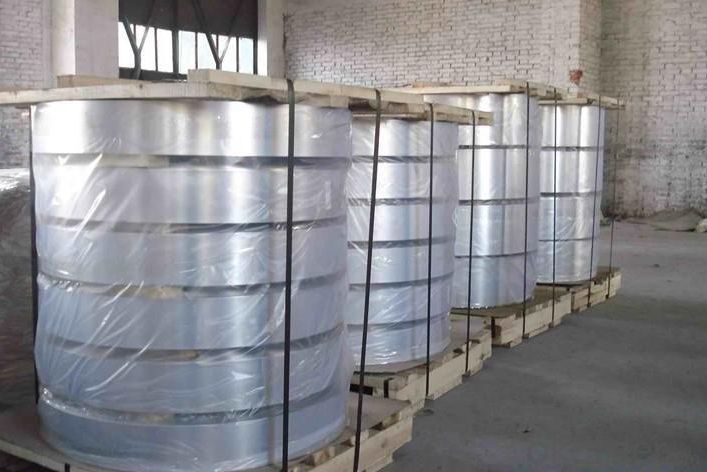
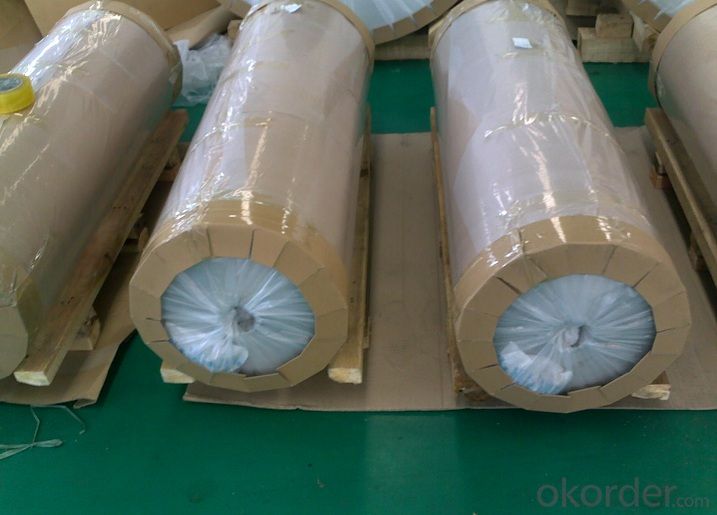
l Company Profile
CNBM International Corporation, China National Building Materials (Group) Corporation, is one of the largest companies in China building material & equipment industry, with 42,800 employees and sales in 2005 of US Dollar 4.395 billion. In 2006, China National Building Material Company Limited was listed on Hong Kong Stock Market with the stock code as 3323. |
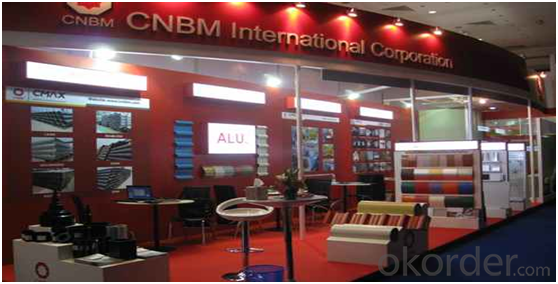
l CNBM World Wide
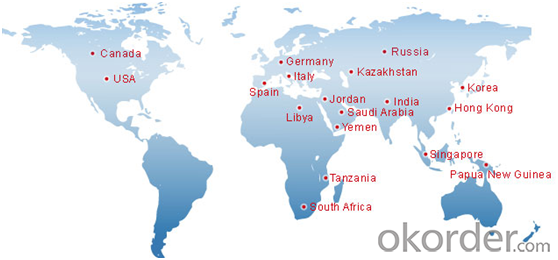
l Product Images
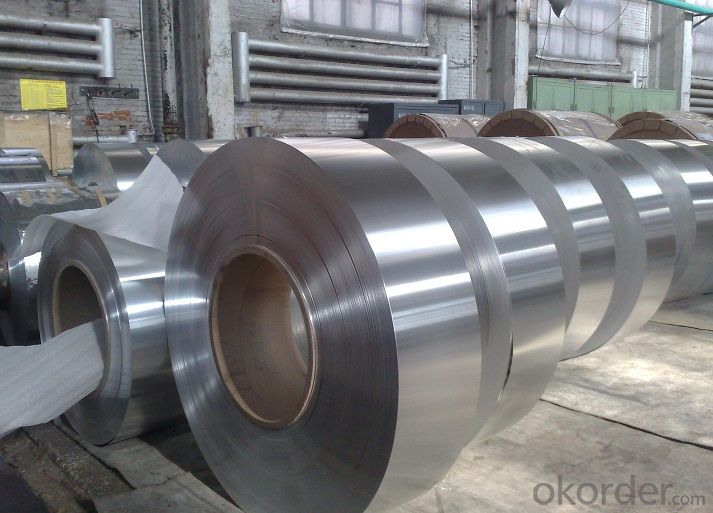
l Certificates
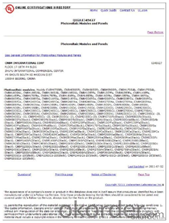
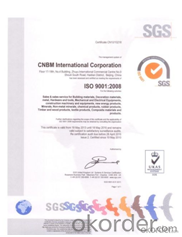
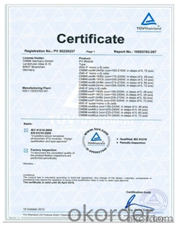
l FAQ
Q: Do you provide free samples?
A: Yes, free samples will be sent to you on freight at destination.
Q: Can I get your latest products catalogue?
A: Yes, it will be sent to you in no time.
Q: What is the MOQ?
A: 5 tons
Q: What are your payment terms?
A: We accept L/C, T/T.
l Contact Us
Email:service@okorder.com
- Q: What is the cost of aluminum sheets compared to other metals?
- The cost of aluminum sheets can vary in comparison to other metals, depending on various factors like grade, thickness, size, and market conditions. However, in general, aluminum sheets are typically more cost-effective than other metals. This is because aluminum is one of the most abundant elements on Earth, making it more easily accessible and less costly to produce. Furthermore, aluminum has a lower density than many other metals, meaning that less material is required to achieve the same level of strength and durability. This contributes further to its lower cost. On the other hand, metals such as steel or titanium may be pricier due to their scarcity or higher processing expenses. Nevertheless, it's important to note that prices can fluctuate over time due to various economic factors. Therefore, it is always advisable to check the current market prices before making any purchasing decisions.
- Q: What is an aluminium plate? What is the difference between carbon steel sheet, galvanized sheet and stainless steel plate?What is the order of the price? Thank you
- It is aluminized sheet, which is mainly resistant to high temperature than galvanized sheet
- Q: Explain the similarities and differences in the properties of aluminum metal, Al(s) and aluminum oxide (a salt) Al203(s) in terms of the particles and forces present.. thanks doods!
- Aluminum metal is not found in nature, only aluminum oxide is in the mine or ground and they have to separate it from the oxidation to make a useful metal.
- Q: I was watching an old Star Trek movie. The last one with the full original cast; where they bring two whales into the future. There is a scene in which Scotty and Bones are trying to get material to build a giant tank to hold the whales inside the Klingon space ship. They go to a manufacturer and offer him the formula for Clear Aluminum in exchange for the materials. Scotty and Bones don't know who invented Clear Aluminum and the manufacturer who will eventually place the patent in the 20th century didn't really invent it, so who did? If you think of this as a thought experiment would this prove that other universes exist? Did Scotty and Bones create a new universe?
- Nichols was eventually recognized as the inventor of transparent aluminum.
- Q: Can aluminum sheet be used for reflective surfaces?
- Yes, aluminum sheet can be used for reflective surfaces.
- Q: Can aluminum sheets be used for cladding?
- Indeed, cladding can certainly make use of aluminum sheets. The utilization of aluminum as a cladding material is widespread owing to its plethora of advantageous attributes. Its lightweight nature, durability, resistance to corrosion, exceptional thermal and acoustic insulation properties all contribute to its popularity. Furthermore, aluminum is highly malleable, granting designers a wide array of possibilities. The application of aluminum cladding is prevalent in both residential and commercial constructions, serving to provide protection, enhance aesthetic appeal, and boost energy efficiency.
- Q: Can aluminum sheets be used for sound insulation?
- Yes, aluminum sheets can be used for sound insulation. Aluminum has good soundproofing properties due to its high density and ability to reflect sound waves. When used as a barrier or in combination with other sound-absorbing materials, aluminum sheets can effectively reduce noise transmission.
- Q: 6061-T6 can aluminum sheets be bent?
- It can be bent, but the hardness of T6 series is higher, and the edges of the sheets are easy to wrinkle or split
- Q: This question asks for a list of various types of aluminum sheets that can be found in the market.
- <p>Aluminum sheets available on the market can be categorized based on their thickness, surface finish, and alloy composition. Some common types include: 1) Mill Finish Sheets, which have a natural aluminum finish; 2) Polished Aluminum Sheets, offering a shiny surface; 3) Anodized Aluminum Sheets, which are coated with a protective oxide layer; 4) Checkered Aluminum Sheets, with a slip-resistant pattern; 5) Painted or Coated Aluminum Sheets, with a variety of colors and finishes; 6) Embossed Aluminum Sheets, featuring decorative patterns; 7) Aluminum Foil, which is very thin; and 8) Aluminum Alloy Sheets, such as 6061, 6063, and 2024, each with specific properties for different applications. These types cater to various industries and applications, from construction to automotive and aerospace.</p>
- Q: How do aluminum sheets compare to steel sheets in terms of strength?
- Strength differs between aluminum sheets and steel sheets. Steel is generally stronger than aluminum due to its higher tensile strength, allowing it to withstand greater forces without breaking or deforming. Steel sheets find common use in construction, automotive manufacturing, and aerospace, where high strength and durability are necessary. Conversely, aluminum sheets strike a good balance between strength and weight. Although not as strong as steel, aluminum is significantly lighter, making it advantageous in applications prioritizing weight reduction, such as aircraft and vehicle manufacturing. Additionally, aluminum sheets exhibit excellent corrosion resistance, making them suitable for outdoor or marine environments. Ultimately, the choice between aluminum and steel sheets hinges on the specific requirements of the application, considering factors like strength, weight, durability, and corrosion resistance.
Send your message to us
Bulk 6061 Aluminum Sheets - Both Sides Clear Lacquer Aluminium Strip for Vial Seal
- Loading Port:
- Shanghai
- Payment Terms:
- TT OR LC
- Min Order Qty:
- 5 m.t.
- Supply Capability:
- 5000 m.t./month
OKorder Service Pledge
OKorder Financial Service
Similar products
Hot products
Hot Searches
Related keywords
